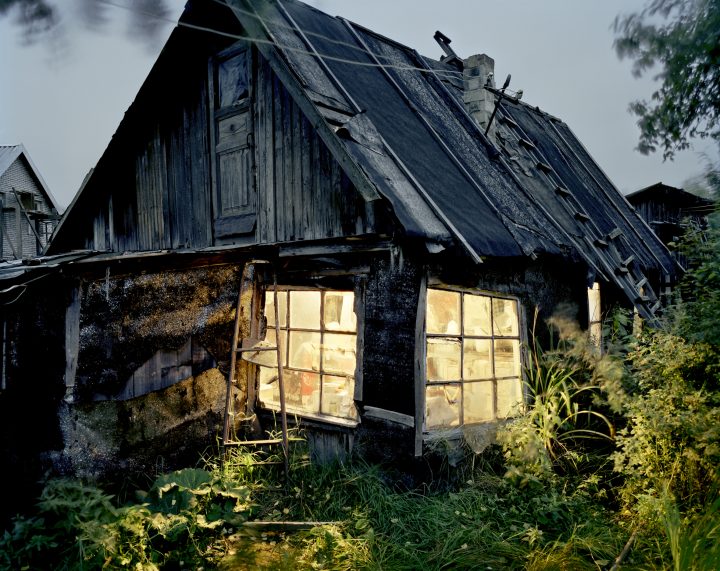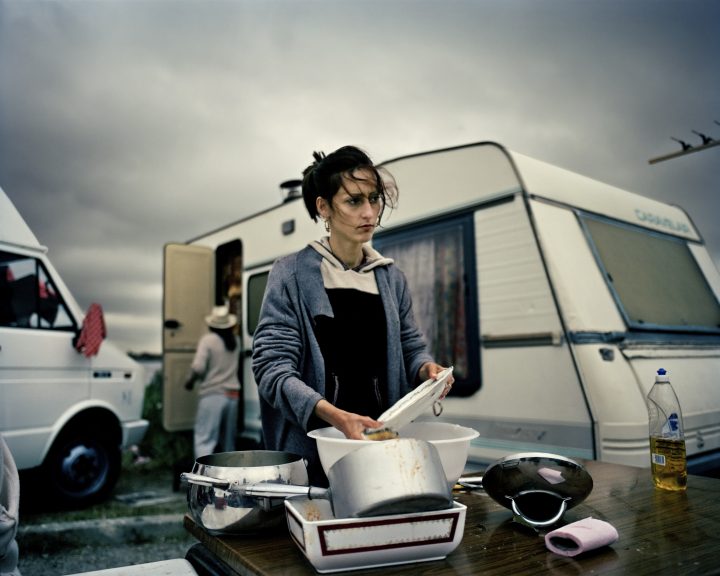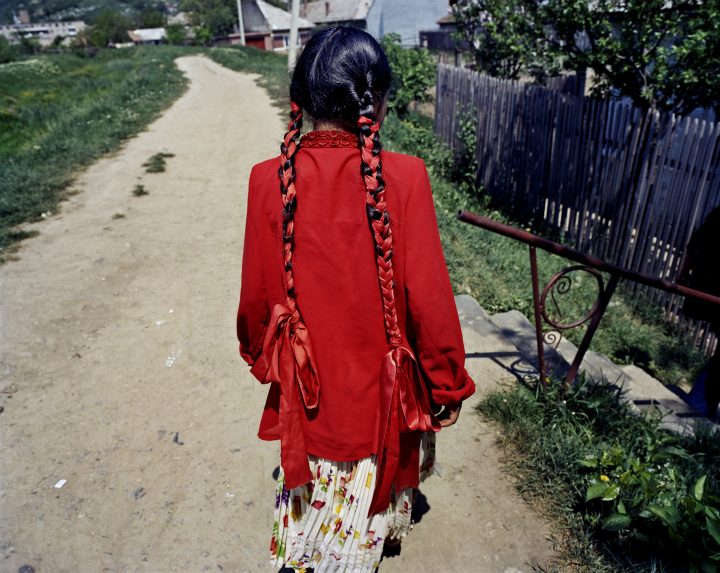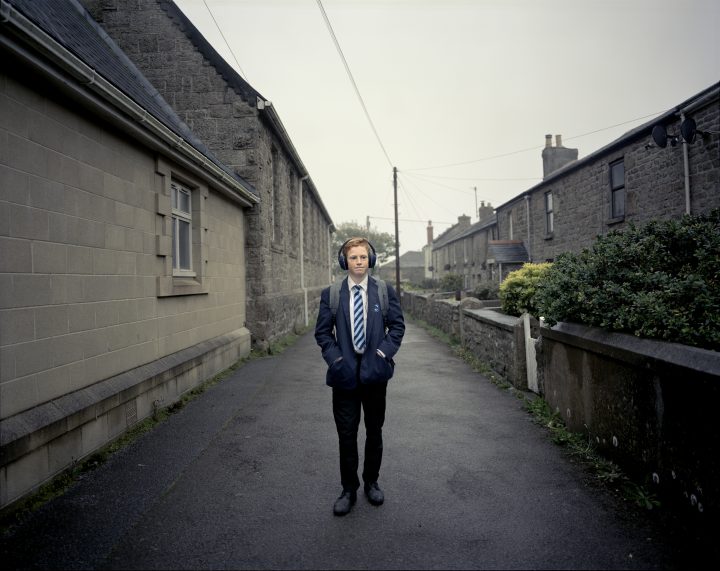OKS-lab fragt… Joakim Eskildsen
 Joakim Eskildsen is known for his work The Roma Journeys, for which he followed several Roma communities in seven countries for seven years. The book received numerous awards, among them the Amilcare Ponchielli Award, Deutscher Fotobuchpreis, the Otto Pankok Promotion Prize, and the David Octavius Hill medal. He often collaborates with writer Cia Rinne for his publications, among them Nordic Signs (1995), Bluetide (1997), iChickenMoon (1999), as well as The Portfolio al-Madina (2002, with Pentti Sammallahti and Kristoffer Albrecht). His latest publications are American Realities (Steidl 2016) and Cornwall (Mare 2018). Home Works, his ongoing project, is a sort of artistic homecoming for Joakim Eskildsen who, after traveling the world for numerous photographic projects, turned back to his beginnings, and to the things that had so much inspired him when he first started taking pictures around his home at the age of 14. OKS-LAB: Hi Joakim, thanks for meeting me. You have been living in Germany for 6 years now. Do you miss your home country Denmark? Joakim: To me, this piece of land could very well be Denmark. There are more birds here however, and more nature. I want to experience the planet as a whole, not separated according to countries. The earth does not know this is Germany. This year you are starting as a Masterclass-teacher at the Ostkreuzschule. Could you tell me a bit about your own education to become a photographer? I began learning about photography at a young age. My brother had photography lessons at elementary school, and taught me the basics. At the age of 13, I knew I wanted to be a photographer. When I needed an internship, I took the telephone book, opened the section of the photographers, and randomly put my finger on the page. The number happened to be that of Rigmor Mydtskov, the photographer of the Royal Court. She was famous for portraying the Queen, and all sorts of Danish celebrities. For some reason, I know it never happened that way otherwise, she picked up the phone herself, suggested a meeting, and I was allowed to start working at her studio right away. Rigmor acted as a sort of psychologist, towards the goal of portraying the person’s potential, which was highly interesting, and I learned a lot. I did not like the commercial part though. Why not? What was lacking? And what were the consequences? I was more interested in art, in creating my own world. Working for her was not about developing creatively, you just needed to be a good worker. She needed a good assistant for developing in the darkroom, setting up lights, mounting and retouching pictures. Rather surprising to her, since I was just a countryside boy, I was able to fulfill her needs. In general, I was not a very interested student, I mostly did whatever I wanted. In Rigmor Mydtskov though, I found a sort of mother figure, though a rather tough one. She actually tried to demotivate me, and fired me a couple of times – or I quit myself. In the end, I decided I needed to find my own way in photography. Although she was upset about my decision, she still asked me to help out now and then. We became good friends, and reached a point of equality. What was it you wanted to do? My work entails my perspective on what I find important: visual statements on nature, human lives, how we live together.  You mostly work on long-term projects, do you think this kind of slow journalism defines your style of photography, and your perspective on the world? The way I documented the Roma people, was the way I saw them, not how I wanted to see them. I created a work that is living in me, my own world, and at the same time completely real. In my eyes, the Roma were a proud and happy people. A friend once said to me that I make poor people look like kings and queens. That might of course be linked to my earlier education at the Royal photographer – but I rather think that I am interested in giving each person dignity. As a photographer you are easily trapped in registering certain stereotypes. To me, if you do something with full attention, and focus on how to make things even better, photography has the tendency to radiate. You could compare it to taking care of your health, and healthy relationships, or building a home. With all the speed of new techniques, and trying to keep up with this, it can just as well have the opposite effect. I feel we are all traveling on the same fast lane, creating too many pictures. Is this a mentality you want to pass on to your students? Well, yes, of course. It is said that most photographers only make about 15 amazing pictures throughout their careers, within the span of six different motives. Within their work, they try to find the essence of their interests by making that same picture over and over again. Of course, this might not be valid for everything, but if you stay focused, I am quite sure you can reach a deeper level in your practice. How does that work in your own photographic practice? I try to continuously broaden my scale of motives, to explore new and unusual ways to photograph. And if I find a new motive, I am always alert, and try to catch more of it. And are you happy when you find a new way to photograph the same subject? It is very satisfying to extend your horizons.  You specified in bookmaking in 1993 with Finnish masters Pentti Sammallahti and Jyrki Parantainen as your teachers. What were your experiences with them? Is this something you want to teach yourself as well? After quitting work with the Rigmor Mydtskov Studio, I saw an exhibition of Finnish photography that I was so fascinated with that I kept on talking about it until my brother finally told me go to Finland. So I packed my things, and left for the University of Art and Design in Helsinki. During the year I studied there, I knew that it was bookmaking I wanted to focus on. Jyrki Parantainen assisted me in making my first book, Nordic Signs, 800 handbound copies, produced with stochastic raster. I finished my masters rather quickly after that. You’re known for your long-term projects, which are usually your own initiatives, but do you mind taking short term assignments as well? Do you work differently when you have assignments? I do not mind doing assignments at all. In 2011, Kira Pollack of TIME Magazine asked me to cover poverty in the United States. It was interesting to work with an editorial approach, on a subject I would not have chosen myself. You need to surprise yourself sometimes. My criteria was and still is that I will not take on any assignments if I cannot make them my own work. I do not want commercial work to dominate my life. How do you see yourself as a teacher? What do you want to share with your students? I teach students to follow their heart in photography, even though it may sometimes feel that ‘it has all been done before’. At least try to do it, and by applying a sort of personal concept in your thinking you are making it unique. Free yourself of conventions, and if you like what you are doing, other people will, too. Stay in contact with yourself, and keep on trusting your instincts. Practical stuff will follow. You are such a philosopher. No, not at all. I am what one would call a pocket philosopher. Thank you for this talk!  Joakim Eskildsen, born in Copenhagen in 1971, is a documentary photographer. He lives just outside Berlin on an old farm surrounded by birds and a vast, green landscape. |